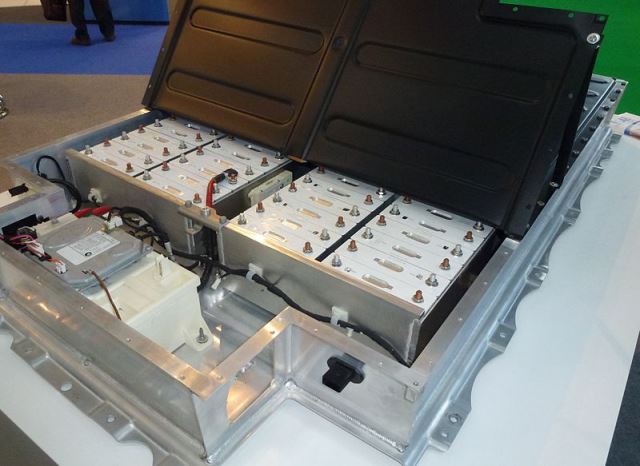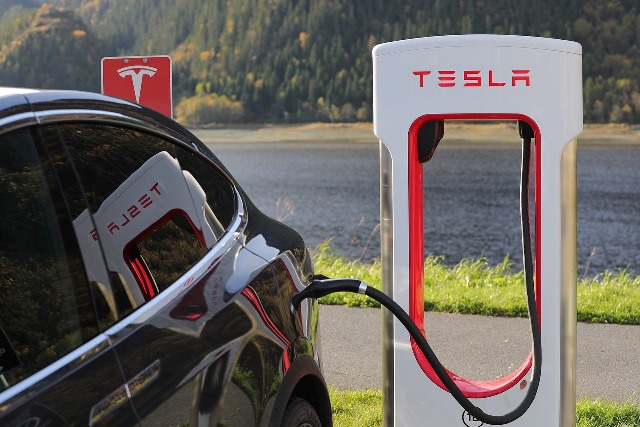Phosphorus anode engineering brings us closer to high-speed lithium batteries

Lithium-Ion Battery for BMW i3. Source: Wikimedia Commons.
That's why achieving a high-capacity, fast-charging battery remains the goal of the developers of this type of technology. And perhaps they are already closer to achieving it, as a research team from University of Science and Technology of China (USTC) published details of an electrode material that would enable more advanced batteries, details of which appear in the journal Science, in volume 370 this month.
Basically the combination of high energy and high charging rate in a battery is determined by a key component in all batteries, the electrodes. The energy that is stored and released from batteries is produced through electrochemical reactions that take place between the materials that make up their electrodes, and although the development of a range of lithium cathodes has been at the heart of research, for effective transfer of lithium ions, and therefore energy, anode improvements are also an important goal.
This group of researchers developed a compound made of black phosphorus and graphite in its core, which is covered with swollen polyaniline. The black phosphorus had already been considered before for this task, however the idea had been abandoned because the electrodes of this material tend to deform at the edges of the layers, but unlike previous efforts, this new combination of materials has allowed to obtain a high rate of load without sacrificing the stability of the cycles. The formation of covalent bonds with graphite carbon restricts the reconstruction of the edges on the layered BP particles to ensure open edges for rapid entry of Li+.
The research team also addressed another problem, which is that electrolytes can break down into less conductive pieces and accumulate on the electrode surface, inhibiting the transfer of lithium ions to the electrode material. Then, by applying a thin layer of polymer gel to the swollen polyaniline electrode materials, a more stable solid electrolyte interface was produced that inhibits the continuous growth of poorly-conducting lithium fluorides and lithium carbonates, ensuring efficient lithium ion transport, effectively solving the problem.
According to the authors, "the new combination of materials tested on the anode restored 80% of its full capacity in less than 10 minutes and showed an operating life of 2000 cycles at room temperature, so if scalable technology can be achieved, this material can provide an alternative graphite anode that will take us to a lithium-ion battery with an energy density of more than 350 watt-hours per kilogram.
This is significantly important, as such an energy density could make electric cars truly competitive with fossil-fuel powered cars. To get an idea, Tesla's model S currently on the market has a range of 400 miles on a single charge, which means that a similar car with an energy capacity like the one described would have a range of 600 miles on a single charge, and could be recharged in minutes not hours.

Tesla model S in charging station. Source: Pixabay.com.
Although researchers will continue to advance with the fundamental questions of the process that will make the production of the materials scalable, let's hope they will also include the variables of price and recycling, since one of the things we see that limits the industrial implementation of advances like these is precisely the cost associated with the technology or its capacity to generate another environmental problem by trying to solve one.
Thanks for coming by to read friends, I hope you liked the information. See you next time.

This post has been manually curated by @bala41288 from Indiaunited community. Join us on our Discord Server.
Do you know that you can earn a passive income by delegating to @indiaunited. We share 80 % of the curation rewards with the delegators.
Here are some handy links for delegations: 100HP, 250HP, 500HP, 1000HP.
Read our latest announcement post to get more information.
Please contribute to the community by upvoting this comment and posts made by @indiaunited.
Thanks for the support!
Fast charge will bring mass adoption of the electric car. :)
That's right my friend, no doubt that will help a greater adoption of this type of vehicle. Greetings.
Hi @emiliomoron
Each time the study of this type of technology advances, last year I read that the technology company IBM developed a new battery that does not use lithium or cobalt, according to them it is safer, more efficient and cheaper, which as you well know is what companies are always looking for, and it is lowering costs.
But the most important thing is to avoid contamination, although you do not know, it has been shown that these batteries tend to be very contaminating once their life of use is extended.
That's right my friend, there are many advances in battery technology. But as you say, the most important thing is to take into account the environmental problem, since lithium and other metals used in these applications are difficult to recover.